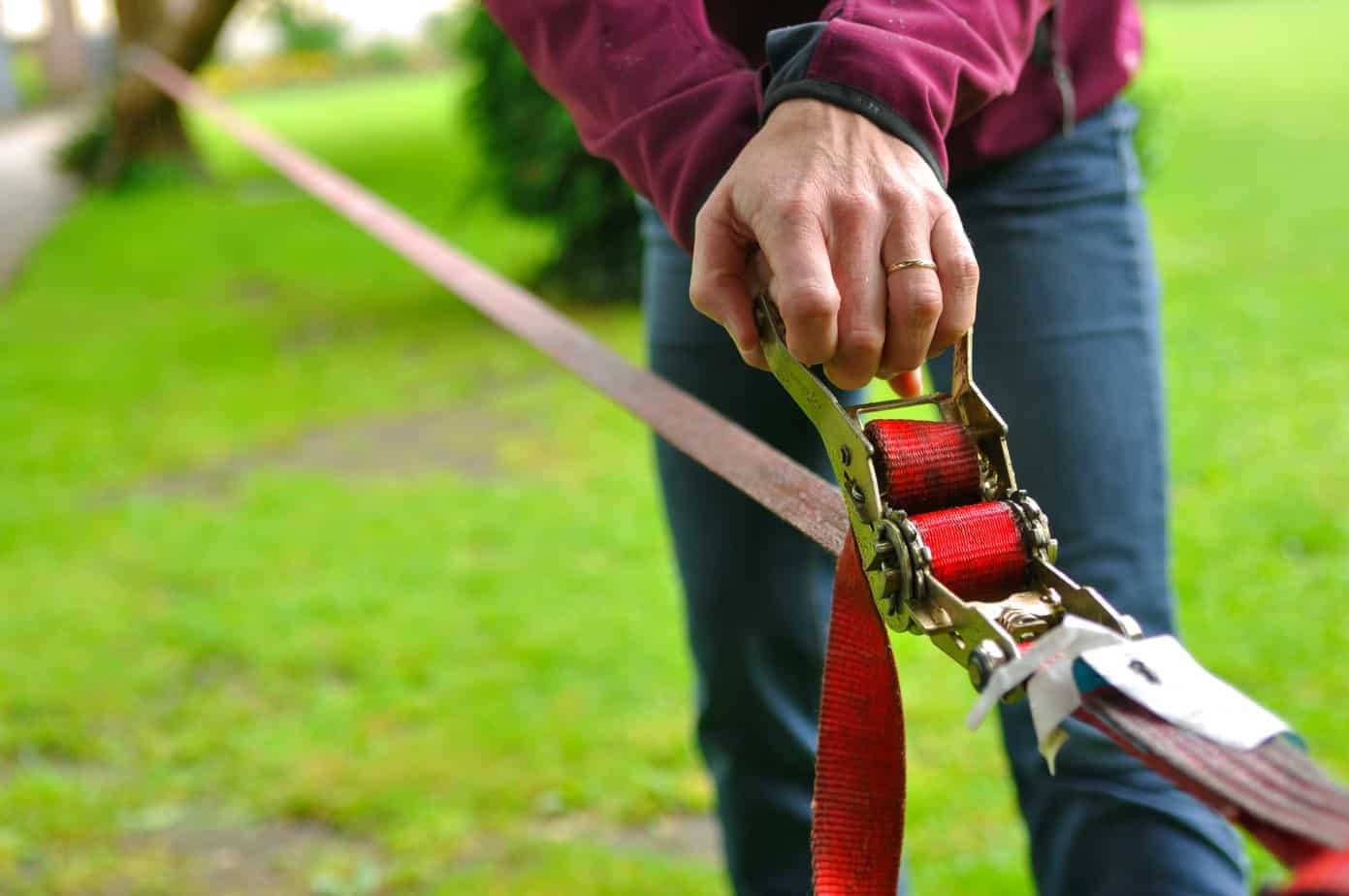Modern slackline kits are easily purchased with a ratchet which is a device to tighten the slackline on one tree or other anchor point that you attach your line to. Some kits come with two ratchets which enables you to ratchet up both ends of the slackline.
A ratchet system enables you to wrap one end of the slackline around one anchor point and the other end of the slackline against the second anchor point. You then use the ratchet to tighten the slackline and get the desired tension (tightness) to use the slackline.
The question is then, how much slackline can the average ratchet hold before it is full? It’s not necessarily a black and white answer as manufacturers have different specs that you can choose from but let’s take a closer look at your options.
You will generally find that one regular ratchet can accommodate a slackline of up to around 25m (82′) in length and that a second slackline will be needed for a slackline of around 35m (115′) in length. Once you have a slackline over 50m in length you will most likely need a more sophisticated pulley system to tension it.
Who can benefit from a slackline ratchet system?
The average slackliner who sets up their line in a park or other outdoor area using trees, poles or other anchor points will be fine with a ratchet system. It’s quick, easy to use and you can easily find ratchet sets with slacklines of 20m (65′) in length or slightly longer, which is great for beginners and intermediate slackliners alike.
A ratchet similar to the one shown above in the main photo has a maximum capacity on the reel for a reasonable slackline length for beginners and even more experienced slackliners. For longer and more sophisticated set ups such as highlines or longlines, a pulley system which can be hundreds of thousands of dollars to purchase is most likely required.
Most slackliners will never need that sort of set up though unless they’re planning on taking part in highlining or longlining.
Having said that, many slackliners will be perfectly fine with a slackline of 20m – 35m (65′ – 115′) in length and will get by with a line in this range.
For slacklines at the longer end, you’ll probably be getting a kit with 2 ratchets.
The problem with a ratchet system used for slacklining
Using a ratchet system is a fairly easy way to set up your slackline and get the proper tension. It requires less skill than the so-called primitive or Ellington method which we’ll talk about below.
The problem with a slackline ratchet?
When you tighten up the slackline, the excess line is rolled onto the ratchet’s wheel which only has so much capacity. When the ratchet wheel is full, it can no longer hold any additional webbing of the line.
So if you’re thinking of buying a very long slackline to start with and figure you’ll grow into it, you’ll find that you are still constrained by the space on the wheel of the ratchet regardless as you tension it up.
So what do you do when you can’t get the (longer) length of slackline that you want with the ratchet(s) you have access to? You look at using a primitive set up for your slackline.
What is a primitive slackline set up?
We spoke about this in more detail in this article but in a nutshell a primitive slackline set up involves the use of metal caribiners and rings along with the slackline itself to tension the line rather than using a ratchet(s).
The benefit?
You can set up a slackline that is longer than the limit offered by a standard ratchet:
A primitive system tends to allow for longer slackline set ups than a ratchet system. A primitive slackline set up can typically handle slacklines up to 100′ (30m) in length whereas the average basic ratchet will allow for a slackline up to 65′ (20m) in length.
Slackline Tips
So while a primitive slackline is the preferred method for some experienced slackliners who either don’t have a ratchet or don’t want to use one and those people who want a longer slackline than a ratchet set is capable of tensioning.
Recent Posts
Slacklining is a challenging activity that involves walking, balancing, and performing tricks on a flat piece of webbing stretched between two anchor points. It has become increasingly popular in...
Slacklining is a fun and challenging way to improve your balance, core strength, and overall fitness. Whether you're new to slacklining or a seasoned pro, incorporating a slackline workout routine...


